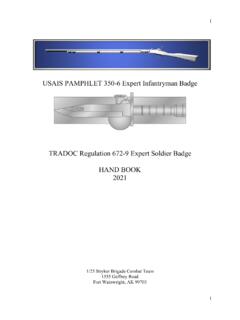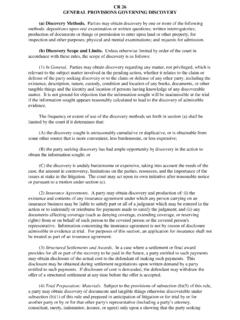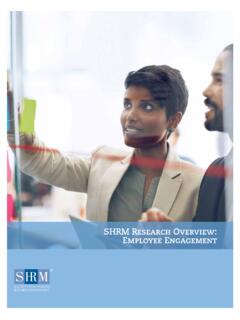Transcription of Human energy requirements - Food and Agriculture …
1 1 FAOFOOD AND NUTRITION TECHNICAL REPORT SERIESISSN 1813-3932 Human energy requirementsReport of a Joint FAO/WHO/UNU expert ConsultationRome, 17 24 October 2001(low)Level of requirement(high)EnergyAveragerequiremen tAveragerequirementPercentage of individuals(low intake)Usual level of intake(high intake) that stipulated intake is inadequatefor a randomly selected individual Probability that stipulated intake is excessivefor a randomly selected individual iiiFOREWORDA ssessing the calorie and nutrient requirements of Human beings, with the greatest possible degree of accuracy, is one of the most important and central mandates of the Food and Agriculture Organization of the United Nations (FAO).
2 Since 1948, FAO has convened numerous expert groups in the field of nutrition to collate, evaluate and interpret current scientific knowledge in order to derive estimates of Human energy requirements and use these estimates to provide recommendations to people and policy-makers. The World Health Organization (WHO) began its collaboration with FAO on this important work in the early 1950s, while the United Nations University (UNU) joined the initiative in 1981. This important publication is the final report of the most recent expert group meeting, the Joint FAO/WHO/UNU expert Consultation on Human energy requirements , convened in October 2001 at FAO headquarters in Rome, Italy.
3 The primary purpose of the expert meetings on nutrient requirements has remained the same throughout the years: to give advice on scientific issues related to food energy and nutrient requirements and to formulate recommendations for action. Various expert groups have contributed principles for determining and applying general requirements , which have been adopted worldwide. The global scientific community has continued to embrace the advice on requirements that was first published by FAO alone and later in collaboration with WHO.
4 The FAO/WHO recommendations have reflected the state of knowledge at particular points in time, and have also influenced research agendas and methodologies over the years. In fact, the FAO/WHO recommendations are currently utilized in virtually all countries, and nutrient requirement reports are among the most frequently referenced and most sought-after publications in both organizations. Estimates of Human energy requirements are essential for assessing whether food supplies are adequate to meet a population s nutritional needs.
5 Such estimates are also essential in assessing the proportion and absolute number of undernourished people worldwide. The recommendations derived from these estimates assist governments to monitor nutrition programmes and plan development activities. The recommendations also help with the specific formulation of planning at the national level for agricultural production, food supplies and the mobilization and distribution of emergency food aid. FAO has an ongoing mandate to review these assessments periodically particularly as new research findings emerge and to produce estimates using the highest possible degree of accuracy based on recent scientific advances and developments in the field.
6 FAO publishes this report on behalf of the three United Nations (UN) agencies (FAO/WHO/UNU) that organized the consultation. We would like to express our gratitude to the members of the expert consultation for their contribution to this important report, as well as to the numerous participants of the working groups. The work of these groups preceded the expert consultation and served as the foundation for discussions and exchange during the meeting. Thanks are also due to Dr E. Kennedy, who very skilfully chaired the expert consultation, and to Dr B.
7 Torun for his commitment to the role of rapporteur and for his contribution to early drafts of this report. We thank all the participants, as well as the non-participating experts who drafted background papers as part of the preparatory process for the expert consultation. These background papers will be published in a special issue of Public Health Nutrition in 2005, thereby providing a more detailed peer-reviewed literature source for many of the ongoing debates on the various topics discussed during the consultation. We would also like to express our special gratitude to the FAO staff members who constituted the Secretariat and completed much of the follow-up work that culminated in this report, in particular the staff of the Nutrition Planning and Evaluation Service (ESNA), P.
8 Shetty, R. Weisell, and B. Burlingame, as well as G. Kennedy, F. Martinez Nocito, T. Ballard and J. Shaw who assisted as consultants both during and after the expert consultation. Kraisid Tontisirin Hartwig de Haen Director Assistant Director-General Food and Nutrition Division Economic and Social Department vCONTENTSFOREWORD iiiPREFACE vii1.
9 INTRODUCTION What is new in this report? Intended use of this report Policy implications 2 References 32. PRINCIPLES AND DEFINITIONS Definitions Sources of dietary energy Components of energy requirements Calculation of energy requirements Recommendations for physical activity Glossary and abbreviations 9 References 103. energy requirements OF INFANTS FROM BIRTH TO 12 MONTHS Measurement of total energy expenditure Equations to predict energy expenditure energy needs for growth Calculation of energy requirements Catch-up growth 17 References 184.
10 energy requirements OF CHILDREN AND ADOLESCENTS Measurement of total energy expenditure Equations to predict total energy expenditure energy needs for growth Calculation of energy requirements Recommendations for regular physical activity Infections and mild malnutrition 31 References 325. energy requirements OF ADULTS Factorial estimation of total energy expenditure and physical activity level Estimation of basal metabolic rate Physical activity level energy requirements and dietary energy recommendations Older adults and the elderly Recommendations for regular physical activity 49 References 506.

















